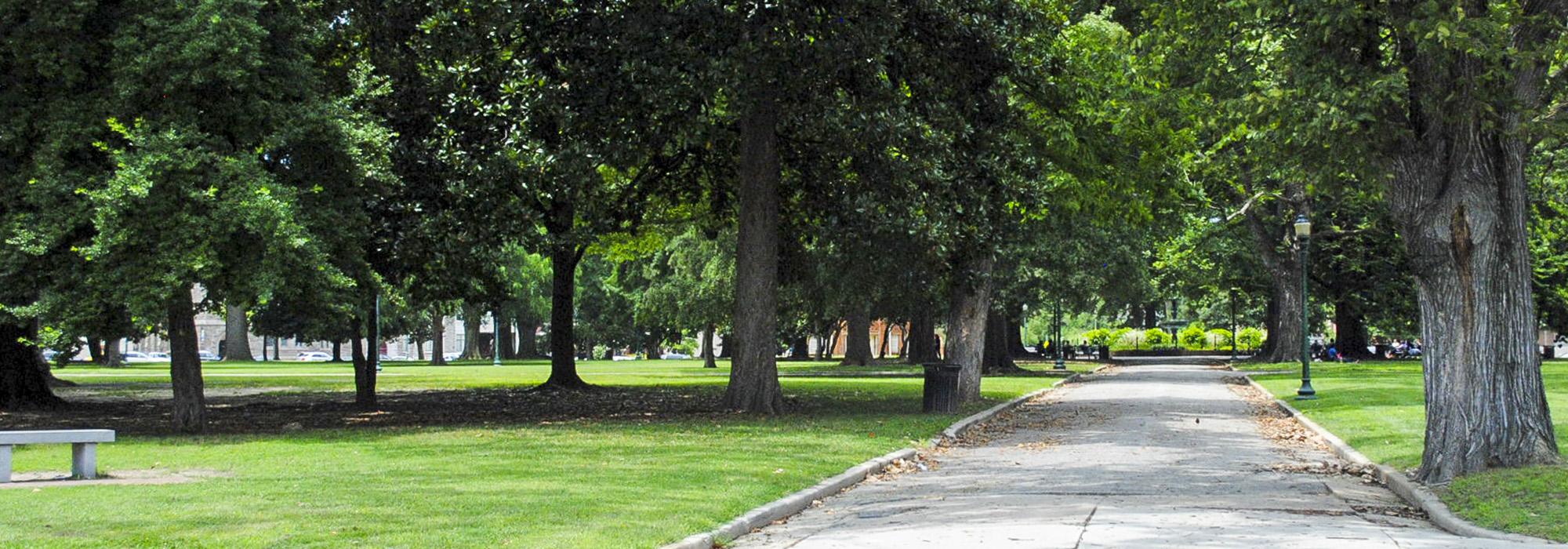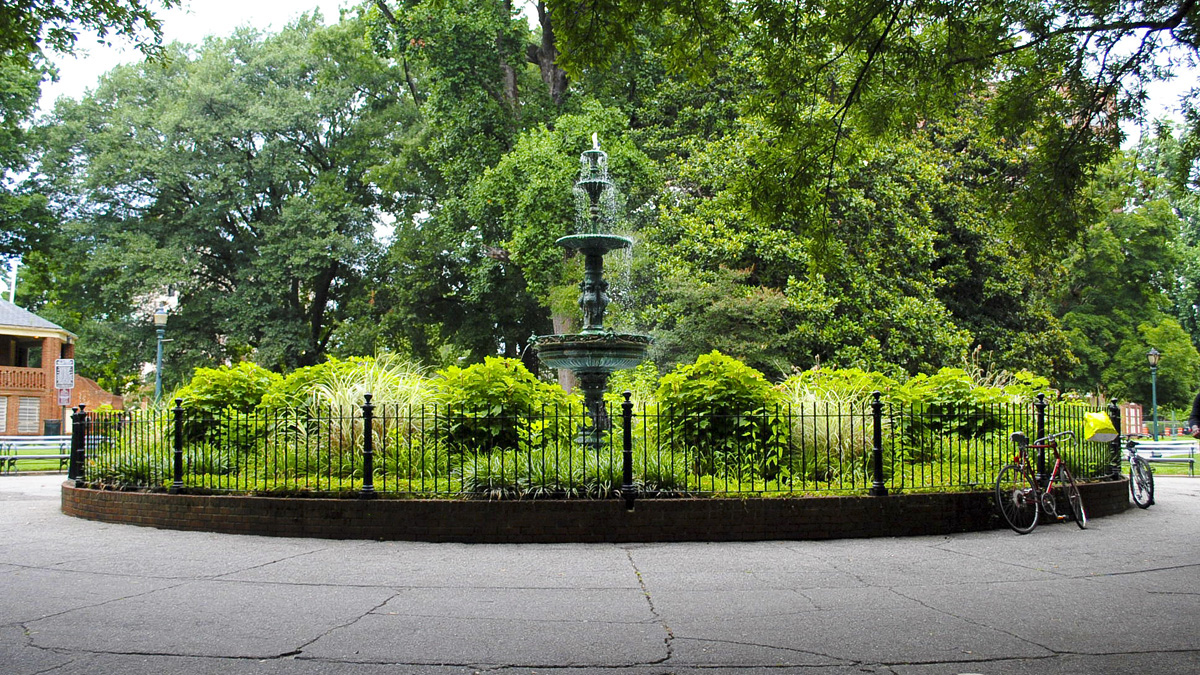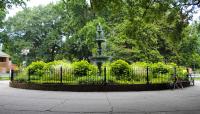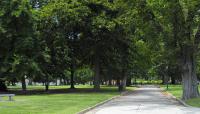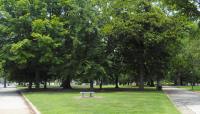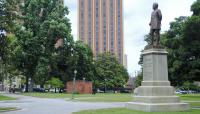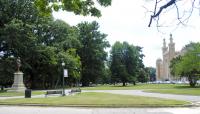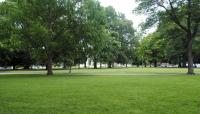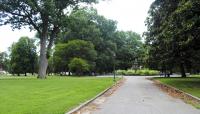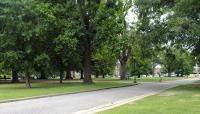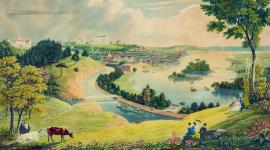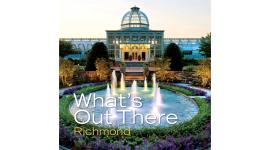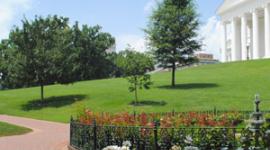Landscape Information
One of four properties purchased in 1851 by Richmond’s Committee on Public Squares, this 7.5-acre, five-sided parcel west of the Capitol is named for President James Monroe. The site was utilized as fairgrounds and, later, as a Civil War encampment. Anticipating westward suburban expansion, city engineer Charles H. Dimmock implemented a curvilinear landscape design with informal groupings of mature shade trees, smaller ornamental trees, and shrubs in 1869. Eight years later civil engineer Wilfred Cutshaw redesigned the relatively flat park, employing a radial network of walks converging at a pyramidal, rusticated granite fountain in the center of a central plaza. The pyramid was replaced in 1903 by an ornamental, four-tiered, cast-iron fountain executed by J.W. Fiske. Between 1891 and 1911 three memorials were added to the landscape, including local sculptor Edward Valentine’s Wickham Monument, William Couper’s bronze statue of Joseph Bryan, and the granite Fitzhugh Lee Monument (artist unknown). A circa-1890 band shell was replaced in 1939 by the Checkers House, an octagonal Art Deco pavilion. Landscape architect Charles Gillette designed the World War II Memorial in 1948, comprising a brick wall bearing limestone steles and flanked by yews and a pair of benches.
At the turn of the twentieth century, this formal landscape became a forecourt for monumental public edifices, including the Gothic Revival Grace and Holy Trinity Episcopal Church, the Italian Renaissance-style Cathedral of the Sacred Heart, and the Moorish-style Mosque Auditorium. Monroe Park and its neighborhood were listed as a historic district in the National Register of Historic Places in 1984.



